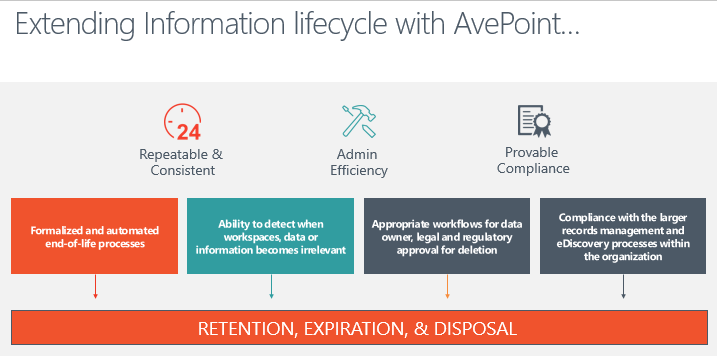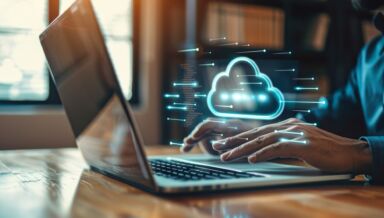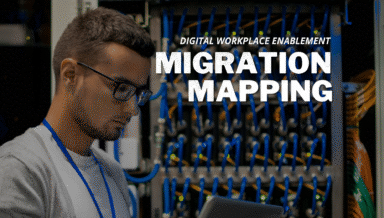Justify, Budget and Launch Your Office 365 and SharePoint Projects Today!

See how you can easily and efficiently migrate from SharePoint with our 30-day free trial. Try it now!
When you begin planning to launch a new project, you’ll need to put together a business case and budget for your investments in Office 365 and all the related the technologies.
First, you’ll need to examine your current on-prem and cloud investments and determine things you want to look at in the future. Then it’s important to talk about migration. Are you already in the process of applying for migration? And how can you budget accordingly? Once you complete your migration, you’ll also need to ensure everything is governed properly in your new environment.
Assessing Your Organization’s Current Environment
It’s time for organizations to begin thinking about getting value from all of Microsoft’s cloud offerings and moving from an older, on-prem SharePoint environment.

One of the main benefits of migrating to a newer environment is cost. This was one of the early reasons for moving to the cloud, and it’s still an important factor. You’d be moving from a capital expense model, where you’re paying a lot of money upfront for servers, to more of an operations model where you’re paying month by month for the service. It also helps tackle the business concern of needing to move faster, quicker, and drive a lot of new innovation.
The cost of maintaining your on-prem investment is an even bigger reason to migrate. Factoring in things like the cost of hardware, software licenses, and third-party contracts for the maintenance of hardware, maintenance and deployment of software all begin to add up!
Analyze what you already have
To go along with analyzing what’s on-prem, assessing the utilization of your current cloud investments is also important. While a lot of organizations own Office 365, there are a lot of folks out there that are only utilizing it for minimal workloads. They may have moved their Exchange mailboxes or decided to use OneDrive, but they haven’t really taken advantage of the full platform stack in Office 365. It’s time to look at these types of scenarios and look to expand on them to get more value out of your current cloud investment!

With the advent of disruption and possibility being driven by technical innovations like Microsoft Teams, organizations are beginning to think, “How do I manage Teams? How do I come up with a deployment strategy for Teams?” Executives looking for ways to modernize their workplace and collaboration methods can play a major role in helping to justify spending on projects and software like Office 365.
Begin Migrating
Once you assess your current investments and see what’s possible when you move to Office 365, you’ll need to figure out exactly how and what you’re going to migrate.

Migrating provides a great opportunity to do an inventory check and differentiate between what’s necessary and what can be disposed of. The issue is that organizations typically don’t know what they have. They know what they use and what they need to keep, but there’s also a big bucket of what’s called “dark data.” A lot of this dark data exists across email, file share, and even SharePoint. So, you first want to make sure that you’re only moving what’s necessary (something that will help limit the cost of the migration).

You can use migrations tools like our Discovery Tool to scan the farms and web app. Once you do that, you can talk to your business unit and help them understand that there are certain things that they must get rid of. It can also identify what is compliant within your organization’s retention policy.

The key to a successful migration is to establish a pragmatic approach. This involves walking through your environment and understanding what you have while discovering content that may be outdated. You can then assess what you want to keep, what you want to get rid of, and what you want to protect. Once you’ve completed this assessment you can prepare a design approach for your migration strategy.
Automate and Enforce Governance
Learn how to justify, budget, and launch your Office 365 and SharePoint projects today: Click To Tweet
Once you have all of your data migrated into Office 365 and SharePoint, you need to then think about how you’re going to govern everything. Part of the value of a migration is the opportunity to clean things up, but you also want to make sure that everything stays in order in your new environment moving forward. This is especially important considering that once your data moves to Office 365, there’s no next version to migrate to. That means that this will most likely be the last chance you have to do a massive cleanup, so you must take advantage of it!
Data Governance
There are multiple ways to approach governance. The data governance side focuses on the pieces of content that are being collaborated on within that system and how they’re being stored, retained, removed, and shared. You’ll have to make sure that data is governed appropriately. This is where you’ll see systems like the DLP capabilities, classification, records management, and advanced data governance come into play.

A lot of the advanced capabilities within Office 365 are ones that were hard to do on-prem. There were no good retention mechanisms on-prem, but Office 365 offers a plethora of better options. It’s also important to look at what your Office 365 license covers, because there may be a lot of data governance capabilities within your organization’s investment that will enable you to bring an extra layer of data governance onto the platform. Take advantage of it!
Operational Governance
Another side to governance is operational approach, which takes into account things like how your Office 365 workspaces will be created, how to manage them over time, and how to plan their lifecycles.
The first thing you’ll want to think about is making sure there’s an approval process on where and when people can and can’t collaborate. You’ll want to track collaboration spaces and identify who the owner is. This means you may need to slow down provisioning, but not in a way that restricts the capability of your users to get work done. You may not need to govern the provisioning process entirely, but you’ll want to bring those workspaces under management. There’s been a lot of interest in capabilities that we’ve recently made available to bring anything you want under management, for instance.

The next thing is determining how much governance you apply to the ongoing management, which Office 365 does offer some capabilities out-of-the-box. A great example of this is the new Microsoft Teams administration module that was announced at Ignite this year. This is a great way to have an admin who can keep track of what’s going on in Teams.

The third and final thing to look at in operational governance is focusing on retention, expiration, and disposal in regard to the workspace as a whole. There are some capabilities directly in Office 365 that provides features like a group expiration capability where you can set a zero expiration and establish groups or teams for a year. You can then review after a year and decide whether it’s still needed or not. (Please note: This functionality does require Azure Active Directory P1 functionality, so make sure you’re budgeting for that feature element.)
There’s a lot to consider when it comes to getting your projects launched. You need to make sure you’re only migrating what’s necessary, budgeting for new investments, making sure they remain compliant and then justifying how it’s better than what you already have.
To help you reach your goals, feel free to reach out to our team of experts who can provide guidance to your success in 2019!
Want to learn more about how to approach your migration projects? Subscribe to our blog today!
With over 20 years of business and technology experience, Dux has driven organizational transformations worldwide with his ability to simplify complex ideas and deliver relevant solutions. He serves as the Chief Brand Officer of AvePoint who has authored the LinkedIn Learning course How to Build Your Personal Brand, the book SharePoint for Project Management, as well as numerous whitepapers and articles. As a public speaker, Dux has delivered engaging, interactive presentations to more than 25,000 people at leading industry events around the world. He also hosts the modern workplace podcast #shifthappens that focuses on how leading organizations navigated their business transformation journey. Dux advocates tirelessly for inclusion, using technology for good, and philanthropic initiatives. Connect with him: http://dux.sy



